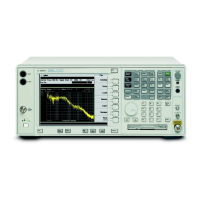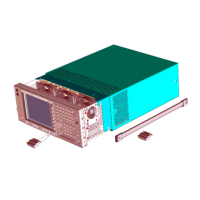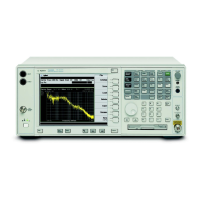Chapter 2 203
Front-Panel Key Reference
System (Local)
System (Local)
Accesses the System menu keys. Pressing System (Local) after the
analyzer has been placed in the remote mode, places the analyzer in the
local mode and enables front-panel control. During remote operation, R
appears in the upper-right corner of the screen. R, T, L, or S may appear
during remote operation, indicating talk, listen, or service request.
Pressing the
System (Local) key removes the R symbol in the upper-right
corner.
Show Errors Accesses a display of the last 30 errors reported. The most recent error
will appear at the top of the list. The first error listed will be the first
error removed if the error list is longer than 30 entries. If the same
error message occurs several times the error message will be
incremented rather than added to the list as a new error message.
The date and time identify the first time and the last time (if there is
more than one of the same type of error) an error occurred. The number
of identical errors is shown, and the error number is also shown with
firmware revision A.08.00 and later.
Key Access:
System
Prev Page
Allows you to access the previous page of error
messages. It is grayed out if you are on the first page or
only one page exists.
Key Access:
System, Show Errors
Next Page
Allows you to access the next page of error messages. It
is grayed out if you are on the last page or only one page
exists.
Key Access:
System, Show Errors
Verbose SCPI
On Off
The information in the Error History Screen is
formatted to fit the screen size. Additional information
is available via the SYSTem:ERRor? command. It
indicates which SCPI command was executing when
the error occurred and what about that command was
unacceptable.
Example: First set SYST:ERR:VERBOSE ON
If the command SENSe:FREQuently:CENTer 942.6MHz
is sent, then sending SYST:ERR? returns:
–113, “Undefined
header;SENSe:FREQuently:<Err>CENTer 942.6MHz
$<NL>”
Key Access:
System, Show Errors
